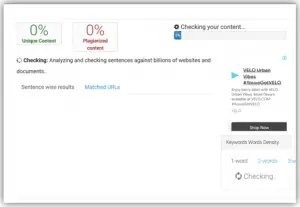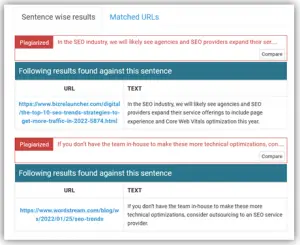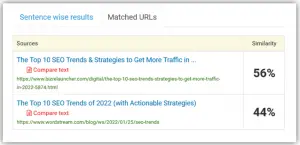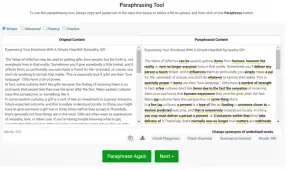How To Write An Essay Quickly : Student Guide
Compositions are written works that present thoughts and knowledge in a coherent way. You should do your research before you start writing an essay. While we all have our own writing skills, many people need assistance with academic writing such as Pro Essay Writers or essay writing services. While some people are able to focus quickly and write essays without having to plan, others struggle with planning. Here are some helpful tips if you have difficulty writing a paper quickly.
Tips & Tricks For Writing Essays Quickly-
If one has some tips and advice, it is possible to cope with writing tasks that require a lot of writing. Speed is a major limitation for many students. Each student wants to learn how to write essays in a matter of hours. It is important to show interest and learn the tricks that will help you get the results you need. Only then can you produce high-quality essays in a very short time.
These tips can be very valuable and could work for everyone, no matter what level of education they have. These tips can help you identify gaps in your knowledge and teach you how to write faster essays.

Lets move on to these 15 important tips!
Tip-01: Get Rid of The Ink & Get Your Computer-
Technology has been a major advancement over the years. Technology helped to reduce the time required for certain activities like writing. The average student can type faster than he writes today. A good tip for writing a great essay is to use a computer, except when you need to hand write it. Don’t forget to take a break and get typing!
Tip-02: Get Rid of All Distractions-
Did you notice that the most distracting thing we have these days isn’t people? If you are serious about writing an essay quickly or how to title one, it is a good idea to put down all your social media devices when working on essays. Focus on the task at hand and set your mind straight from the beginning. You must get rid of all distractions. You must be determined to succeed.
Tip-03: Rethink Your Attitude About Writing-
When one has the right mindset toward a task, it is easier to accomplish more in a matter of minutes. You should be positive and goal-oriented. You may find that this is a simple process, much like making cotton candy. You can achieve much quicker results if you know how to write essays quickly. It doesn’t always have to do with time or resources – you can just reset your mindset and get better results.
Tip-04: Always Draft An Essay-
Make sure you have outlines ready for every paper. A perfect structure is essential for any assignment. As an important part of writing, make sure you have an argumentative thesis. Structure, paragraph structure, and conclusion should all be covered in the thesis. Keep these tips in mind when writing a paper.
Tip-05: Learn From Your Experience-
You can search online for examples of similar papers or topics to yours. This will give you an idea of how to draft your written Assignment. Even though it might take some time, you can discover new ways to express ideas by looking at the examples of others. This will not only assist you now, but it will also help you write faster essays for future assignments.
Tip-06: Don’t Underestimate Good Preparation-
You should eliminate any distractions and ensure that you have all the essentials such as a piece or a computer. Be comfortable. Consider visiting a library if you prefer to work in silence. You might prefer background noise to work in silence, so turn on fast music or go to a cafe.
Tip-07: Choose An Interesting Topic-
A clear picture of the topic is essential for a well-constructed composition. It is better to make a decision sooner. When it involves someone’s interests, writing is simple. If you have the option, choose something that will spark curiosity. You should also choose a topic quickly so you have time to change it. For more ideas, check out our list of argumentative essay topic suggestions. Begin by forming your opinion about the topic. It will be easier for you to structure your paper if you narrow down your focus.
Tip-08: Have A Good Understanding of The Subject-
Make sure you understand the topic. If you have to write a fast essay based on Frankenstein’s novel, read it first.
For a two-page essay, don’t gather too much information. Ask your teacher if you are unsure about the requirements.
Tip-09: Make Sure You Take The Time To Research-
Preparation is important. However, it is best to take notes and organize your information so that you can find the information faster and easier. Save bookmarks so you don’t get distracted by repeat searches later when searching the Internet for evidence. It’s now time to go over any instructions you may have for writing an essay. Double-check that the sources used were correct and that evidence was obtained. For more information on how to write a profile essay, see How to Write a Profile Essay.
Tip-10: Structure Your Thoughts Logically-
Are you able to walk your dog quickly? Are you able to make dinner? Before you start writing, make sure that you have taken care of all your obligations. Don’t let your worries distract you from writing. Once you have completed all chores, your focus will shift to the assignment. This moment will be closed if you are more organized and focused. This is the fastest way of writing an essay for college.
Tip-11: Form Your Thesis Correctly-
When writing a thesis, there are many options. Identify what the reader or you would like to find in the text. Don’t complicate the process and start with basic questions: who? what? why when? where?
Another way to formulate your thesis is by branching. Your theme can be presented in a tree format. Place your main idea at the center of a sheet and then “branch off” any additional ideas or thoughts.
You can brainstorm. You can start to write down all you know about the topic. You don’t need to make any changes – simply write down all your thoughts. Recommendations can be made and divided into various categories. Because it is easier to understand the topic, brainstorming can be a great way to get started on an outline.
Tip-12: Pay Attention To The Body Paragraphs-
If you have a plan, this stage can be completed quickly. The main part should not be less than three paragraphs. These paragraphs should be able to develop the thesis and support it. The introduction sentence should be on the subject of each paragraph. This sentence explains the main idea of each paragraph. Consider, for example, writing an essay about resources during World War II. You might indicate: “Women were an integral part of the workforce in World War II because they mastered new professions previously only practiced by men.”
Every paragraph should include a supporting example. If you write an essay on World War II resources, you could say, “During the war, many women became welders which clearly shows the shift in gender roles at work.” When writing creative essays, you must remember to use your imagination.
Tip-13: Introduction & Conclusion Are The Last Stages-
Reversed order is an excellent option if you’re still struggling to write an essay quickly. These are the most time-consuming and difficult parts of any composition. The introduction is the most important part of any essay. It should serve as a guide and grab your reader’s attention. The conclusion should remind readers about the main points and arguments in your essay.
An inverted pyramid structure is a concept for the introduction. Begin with a broad introduction statement, then narrow it down until the thesis is explained. End of the last paragraph, specify your thesis.
Tip-14: Use Transitions-
Paragraphs should be linked in a well-written essay. These transitions show coherence and clarity of thought and are in direct relation to your thesis. Transitions should be at the end or in the introductory sentence of each paragraph.
Tip-15: Check The Composition-
Are all your arguments clear? Slowly go through every word in your essay. Once you’re satisfied with your essay, you can move on to the next step. These are the top 10 easy essay writing strategies that you can use regardless of what assignment you’re working on.
How do you write an essay quickly? What is the most challenging part of writing an essay. It may be difficult to choose a title for your essay. Once you have a topic in mind, it’s easy to start writing. Later, you can add a final title. Remember that every composition has an introduction, body, as well as a conclusion. Don’t forget to research thoroughly and explore different ideas.
A Few Final Remarks-
Writing fast can be great writing! It’s something we strive for at EduBirdie.com. As a team, we work together to ensure that our clients receive the exact same advice we give. You can also write an essay in 3 hours if you are as fast as us. You can ask for any type of essay, argumentative, persuasive, or contrast. Even a thesis paper may be requested. All tips are important. However, you should always strive to improve your speed and quality. Contact Edubirdie to hire an essay writer.








